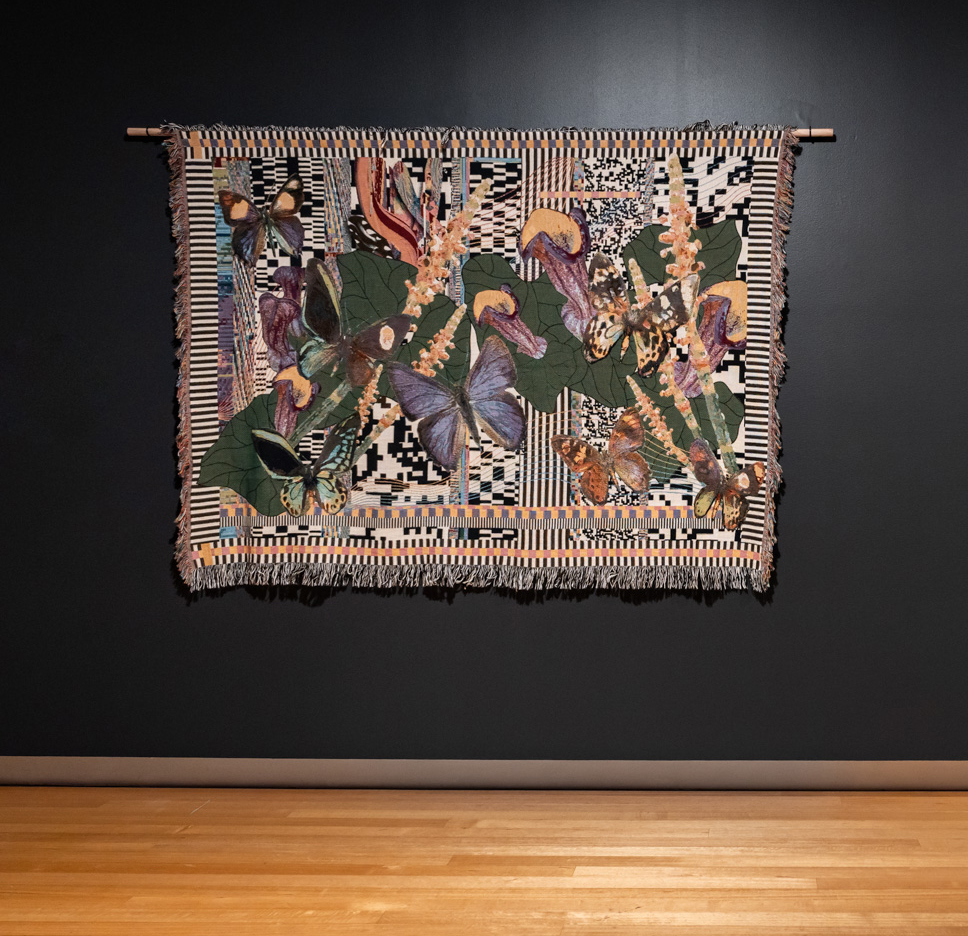
Image: Kate GECK Impossible Evolutions #2: Bulloak Jewel (installation view) 2023, tapestry. Courtesy of the artist.
The work is a tapestry, a textile fabric with woven images, hung suspended from a wooden dowel rod and measures 1.5 metres tall by 2 metres wide.
Three tapestries are included in this series, hung separately, and the tapestry in the middle will be the work described. There are seven butterflies depicted on the tapestry but only one of the butterflies displayed is the species known as the Bulloak Jewel. This butterfly appears on the far-right-hand side. Its wings are spread open with gold, silver green and red markings. Australia’s second rarest butterfly, only noted in two subpopulations in south-east Queensland and named after the Casuarinaceae tree Bull-oak whose leaves upon which its caterpillars feed.
The butterfly in the centre of the work has blue wings and the two butterflies in the right-hand corner are in more muted colours of brown and black. The two butterflies on the far-left-hand side, one above the other, are the species known as the Richmond Birdwing. These two butterflies both have black upper forewings with outlined yellowish markings and beneath these the distinctive iridescent emerald green lower bottom wings they are renowned for. The butterflies appear as if they have landed, resting on the tapestry with their wings spread flat.
The background of the tapestry is pixelated in blocks of chequered black and white with overlapping vertical and horizontal narrow black and white stripes. Moving across the centre of these stripes and across the middle of the work are large dark green leaves and peachy pink flowers.
Impossible Evolutions uses generative machine learning models in the design of these woven tapestries. The project uses Generative Adversarial Networks (GANs) to imagine iterations of endangered and vulnerable Australian butterflies and wildflowers. These ‘impossible’ machine-imagined evolutions gesture to the futures we face as biodiversity decreases: suggesting that there will be no further generations or modulations of these species. Here, by employing the woven medium of tapestry, Geck alludes to the interconnected nature of Earth’s complex ecosystems, reminding us of the importance of a harmonious symbiotic relationship between ourselves and our environment and the importance of its stewardship and care.

